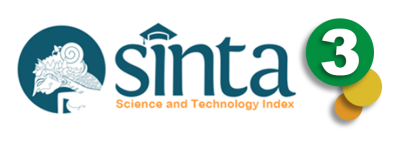ANALISA PRODUKSI DAN PENDAPATAN USAHATANI CENGKEH DAN KONTRIBUSINYA TERHADAP PENDAPATAN KELUARGA ( Desa Takatunga, Kecamatan Golewa, Kabupaten Ngada, Nusa Tenggara Timur)
Abstract
Annual plants are plants that can produce more than one year. Of the various types of annual plants there are several types of plants that are not directly productive. The selection of commodities that will be developed in an area that is supposed to have a competitive advantage, making it profitable and sustainable. In the era of free trade, all agricultural commodities can be freely traded between regions, and even countries. The consequences of free trade is the only commodity that has a competitive advantage are able to compete. The purpose of this study was (1) Knowing how much production, farmers' income, the efficiency of farming cloves. (2) To determine the contribution of family income of farmers from farming cloves, and determine the level of family income distribution of farming clove farmers. and (3) Knowing the value of the feasibility of annual crops cultivated farming. The assessment was conducted using survey / interviews using a structured questionnaire simple. interview done in Takatunga Village, District of South Golewa with a total sample of 30 respondents who specified intentionally (purposive sampling). To obtain the desired goal analysis indicator used is the analysis of production, income and farm efficiency cloves (Syzigium aromaticum) and its contribution to the family income. Clove production of 30 respondents in the village Takatunga is Rp 1,647,969,200 with an average production of USD 5.49323 million . This shows that production Takatunga profitable farming village cloves . Takatunga village clove farm income is $ 1,576,631,200 with a total average income of Rp 3,115,298 cloves . This shows that farming village clove Takatunga very profitable . Clove farming in rural sub-district Takatunga South Golewa very efficient . With a ratio of R / C = 23.09 . Clove farm income contribution to total household income is relatively high at 85.31 % of the total household income .
Downloads
References
02. Anonim, 1975, Pengalaman dan Catatan-Catatan Selama 15 Tahun Di Kebun Cengkeh Branggah Banaran, Penerbit Yayasan Kanisius, Yogyakarta, 49 Halaman.
03. Ahmad M. Saefuddin, 1982, Pengkajian Pemasaran Komoditi, IPB, Bogor, 165 Halaman.
04. Basu Swastha, 1982, Saluran Pemasaran, Konsep dan Strategi Analisis Kuantitatif, Liberty, Yogyakarta, 204 Halaman.
05. Mubyarto, 1986, Pengantar Ekonomi Pertanian, LP3ES, Jakarta, 256 Halaman.
06. Puthut EA dkk, 2013, Ekspedisi Cengkeh, Penerbit Ininnawa & Layar Nusa, Makasar, 270 Halaman.
07. Wahju Muljana, 1982, Cara Praktis Bercocok Tanam Cengkeh, Penarbit CV. Aneka, Semarang, 67 Halaman.
08. Soekartawi, 1995, Analisis Uasahatani, Penerbit Universitas Indonesia, Jakarta,110 Halaman.
09. Soekartawi, 1990, Teori Ekonomi Produksi, Dengan Pokok Bahasan Analisis Fungsi Cobb-Douglas, 155 Halaman.
10. Faisal Henry Noor Januari 2007..Ekonomi Manajerial, Devisi Buku Perguruan Tinggi Rajawali Pers, PT Raja Grafindo Persada, Jakarta, 547 Halaman.
11. Mointi Salmin, Agustus 2008.http: // petani wahid.com. Budidaya-Cengkeh.html.
12. Mointi Salmin,Oktober 2007. http: // teknis budidaya. com. Budidaya-Cengkeh. html.

This work is licensed under a Creative Commons Attribution 4.0 International License.






















